Laser - induced amplification of light (microwave waves) using the effect of induced emission of radiation.
Laser radiation is the result of the conversion of various forms of energy into a coherent light wave (monochromatic, with a constant radiation phase).
Monochromatic laser radiation is the ability to maintain a constant radiation frequency.
Properties of laser radiation.
1. The wave process is characterized by polarization.  .
.
2. Describes the function:  .
.
3. Wave number:  .
.
4. In practice, the levels have a finite value. The nature of the transition from one level to another has a stochastic nature.

Picture 1.
 .
.
5. In quantum electronics, you can change the width of the lines. For this, the Zeyman and Stark effect is used. Stark effect - the width of the zone changes under the action of an electric field The width of the emission lines is indicated by  :
:
 ,
,  .
.
6. A quantum source is characterized by a good quality (monochromaticity):
 ,
,
so the quartz resonator has:  .
.
7. Temporal coherence - the time during which the phase of the wave in the passband remains unchanged:
 .
.
8. Coherence duration - the distance over which the phase velocity (phase front) remains unchanged:
 .
.
This property is used to measure slow displacements and for holographies.
9. The directivity of the laser radiation d.

Figure 2.
10. Diffraction divergence:
 .
.
Laser radiation is characterized by the dependence of the wavelength on the source of the beam divergence. Small angular divergence is used for target designation (a system with laser radiation), space communications, in technology allows to obtain a high radiation density.
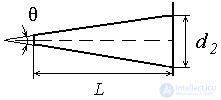
Figure 3.
 ,
,
 , because
, because  .
.
Laser radiation is divided into 3 positions:
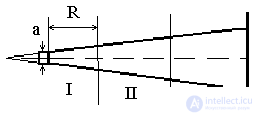
Figure 4.
I - near zone  ;
;
II - middle zone  ;
;
III - far zone  .
.
In the far zone, there is a radiation pattern representing the Fourier decomposition into transverse components. The number of modes must be equal to 1, i.e.

Figure 5.
11. Focusing laser radiation.
For a simple increase in power, a lens (lens) is placed in front of the beam. In an ordinary physical lens, there is no aberration operation.
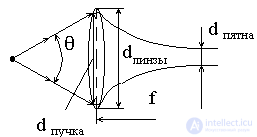
Figure 6.
If the diameter of the lens and the beam is not the same  then
then
 .
.
12. Power density  where
where  - radiated power
- radiated power  - spot area.
- spot area.
13. In practice, the laser field distribution is approximated by a fairly simple Gaussian characteristic:
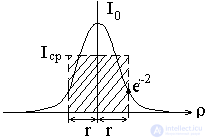
Figure 7.
J ( p ) =  , (one).
, (one).
 - average level:
- average level:  ,
,
 ,
,
Where  ,
,  ,
,  .
.
14. Coherence allows the creation of periodic structures in the material. For this, a system with surface acoustic waves is used.
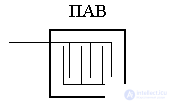
Figure 8.
Polarization property and coherence allow bundling  ,
,  in amplitude, which allows to significantly increase power.
in amplitude, which allows to significantly increase power.

Figure 9.
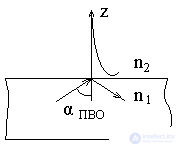
Figure 10.
 .
.
The field strength of two beams:
 ,
,
Where  and
and  - phase shift.
- phase shift.
If the beams are coherent, the field intensity  and at
and at 
 ,
,  .
.
15. Full field intensity:  where n is the number of rays. If the beams are not coherent, then
where n is the number of rays. If the beams are not coherent, then  where
where  - the average value of the i - th beam.
- the average value of the i - th beam.
16. The polarization of laser radiation is either circular or linear, and may also contain elliptical components.
These properties of laser radiation are used for focusing laser radiation, in guidance systems, in fiber communication lines, in engineering and medicine.


Comments
To leave a comment
Quantum electronics
Terms: Quantum electronics